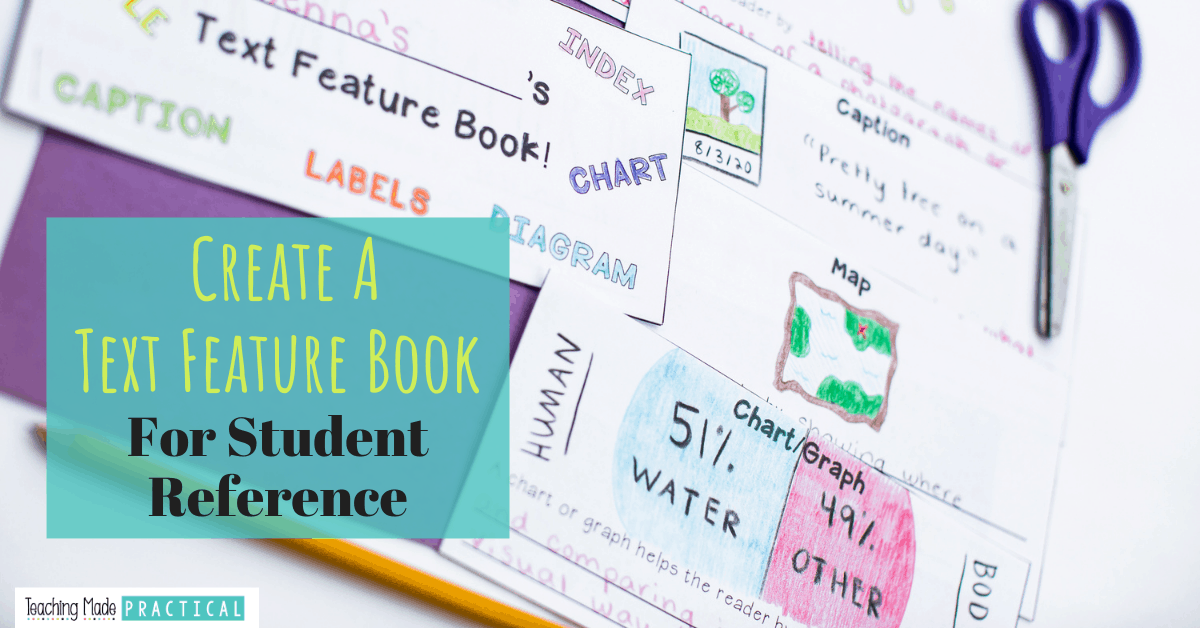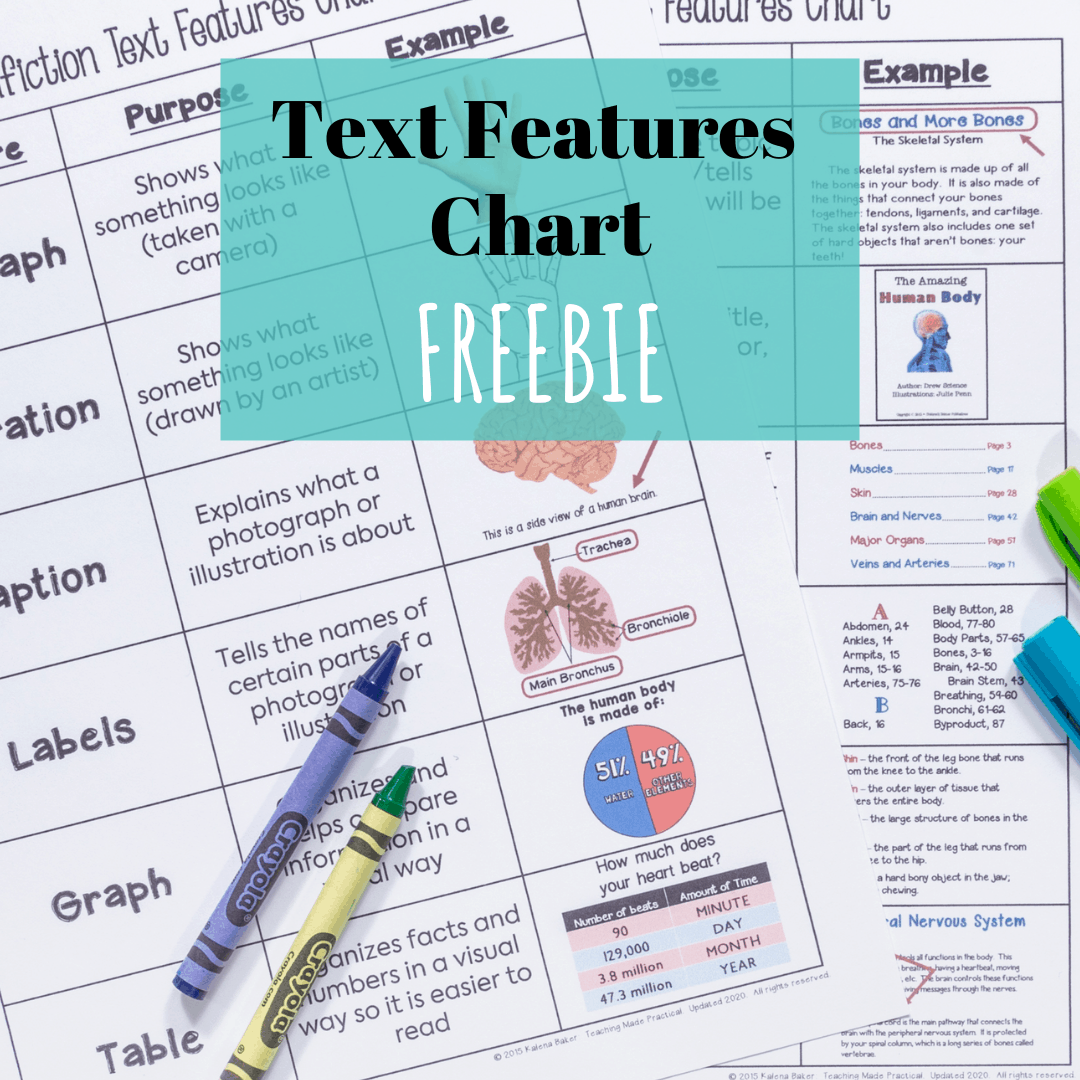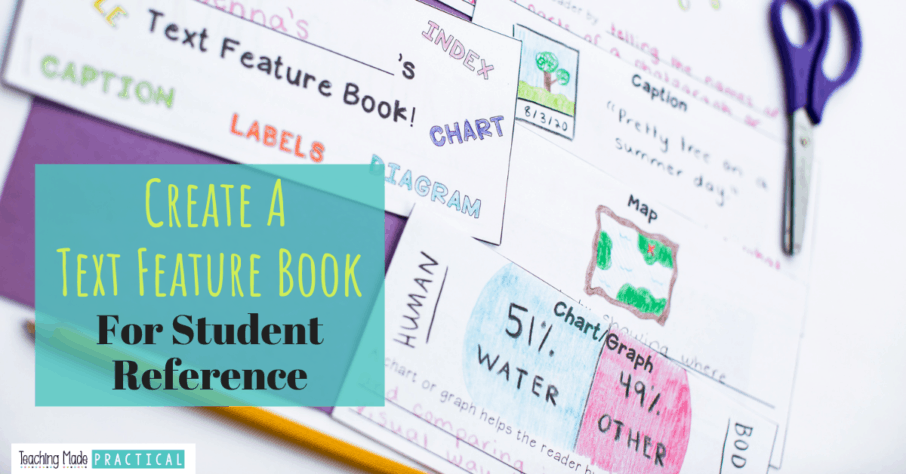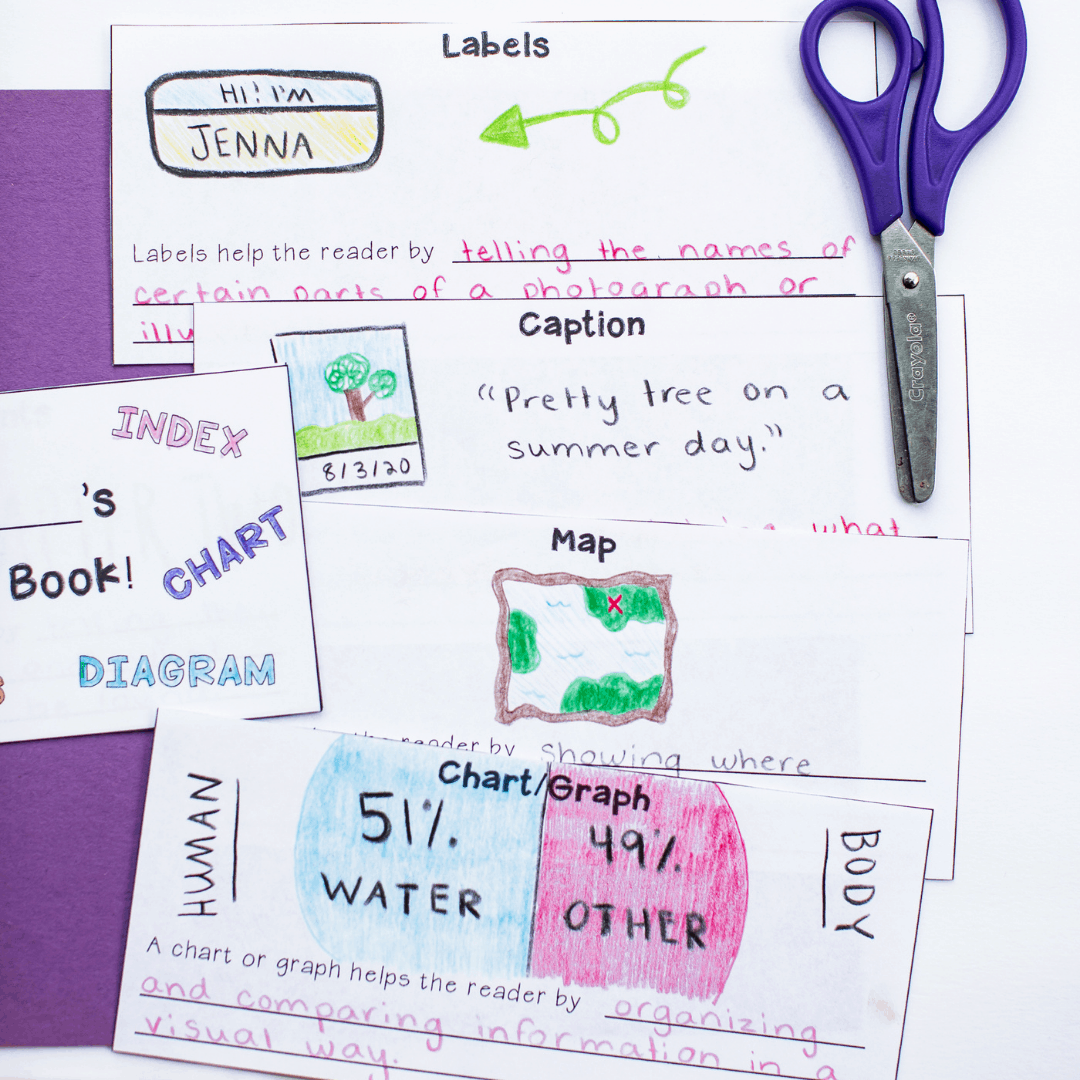
A fun and easy way to help students practice with the different types of nonfiction text features is to create a text feature book.
Creating a text feature book will help strengthen students' understanding of the purposes of different nonfiction text features. And as an added bonus, 3rd, 4th, and 5th grade students can use the book as a reference throughout the school year.
Teaching the Nonfiction Text Features
Before upper elementary students can successfully create a text feature book, they will need to have an understanding of the different text features and their purposes.
You can use this Free Text Feature Slideshow or these Free Text Features Charts to help you with your instruction. Both of these will help you provide your students with plenty of examples.
Since there are so many different text features, there are several different ways you can approach teaching students and having them create a student reference booklet. Choose the option that works best with your curriculum and for your students.
Instruction Options
1. Teach all of the nonfiction text features at once. Then, have students create a book to help them apply what they have learned.
This option will probably take the least amount of classroom time, but could be overwhelming to some students because there are so many different text features!
2. Teach one text feature at a time. After teaching the text feature, have students immediately create a page in their book.
This will help prevent students from getting mixed up with all of the different text features, and will keep some of your students from becoming so overwhelmed.
3. Teach text features throughout the school year as they come up in nonfiction text. After seeing a text feature and discussing it with the class, students can add a page to their text feature book - a book that will grow continuously throughout the school year.
This approach will allow students to see text features in their real setting (a nonfiction text), but it will require some serious planning to make sure you hit all of the important text features throughout the school year.
Creating the Text Feature Booklet
When having students create a nonfiction text feature book, make sure there is room for the student to include the name, give an example, and explain the purpose of the text feature.
Often the purpose of the text feature gets left out of text feature books, but this is the most important part! If students can identify a text feature but they don't understand how it helps them as a reader, then they haven't really learned anything useful.
The template in this text feature booklet resource asks students to explain how the different nonfiction text features help the reader.
If you have any old, school appropriate magazines or newspapers, students could cut out different text features that they find and glue them into their book. (You might also like these other ideas for using old magazines while teaching text features.)
For a no prep option, have 3rd, 4th, and 5th grade students draw their own example of the nonfiction text feature.
Class Books vs. Individual Books
You could have your students create either one big class book together, or have each student create their own individual book, or do a combination of the two.
Class Books
If making a class book, each student would be assigned one text feature (or several text features if working with a group) to be responsible for. That student would be the "expert" on that one text feature.
This might be the best option for you if you have a limited amount of class time, or if you have a lot of struggling students that would be frustrated if asked to create an entire book independently.
However, creating a class text feature book will also limit your students' understanding of the text features they were not assigned.
After creating the class book, it could be placed in your classroom library so that students can read it throughout the school year.
Individual Books
Having each student create their own individual text feature book will take up a lot more class time, but your students will be more familiar with ALL of the nonfiction text features.
After completing their book, upper elementary students could keep it in their desk or interactive notebook so that they could constantly refer to it throughout the year.
Mix it Up
If you want students to learn more than one text feature well, but don't want to overwhelm them by creating an entire book on their own, you could have small groups create books together.
Mixing it up also makes it easy to differentiate this activity. Have your more independent students create their own text feature books while you have the students that need some extra support work as a group to create a book they can share with the class.
After creating a booklet you could integrate technology by having students use the booklet to create a paper slide video! Or, check out these other tips, activities, and ideas for teaching text features to 3rd, 4th, and 5th grade students.

A no prep resource to help your students learn the purposes of the most common text features!



Comments 1
I would love an example ofvtezt feature book!